Posted by
Darrell Mordecai
Your brand SERP is your new business card.
And since brand SERPs became a thing, I often hear the question, how do I get a Google Knowledge Panel for my brand SERP?
Yes, a Knowledge Panel demonstrates your authority to your users.
This question is how do you get one for your business?
To help you out…
I’ve done some research into what they are, how they work, and how you can incorporate Knowledge Panels into your semantic SEO.
In this post, you’ll learn what they are, what triggers them, and how you can get your own Knowledge Panel.
But before we get into it, let’s start with basic definitions. If you just want to get to the practical steps of how you can generate your own Knowledge Panel, feel free to skip this section.
What Exactly is a Knowledge Panel and How Does it Work?
A Google Knowledge Panel is a visual representation of information about a specific known entity (such as a famous person, a known business, or a film) that is displayed on the right-hand side of the Google search results. These SERP features are built on information that appears in Google’s Knowledge Graph.
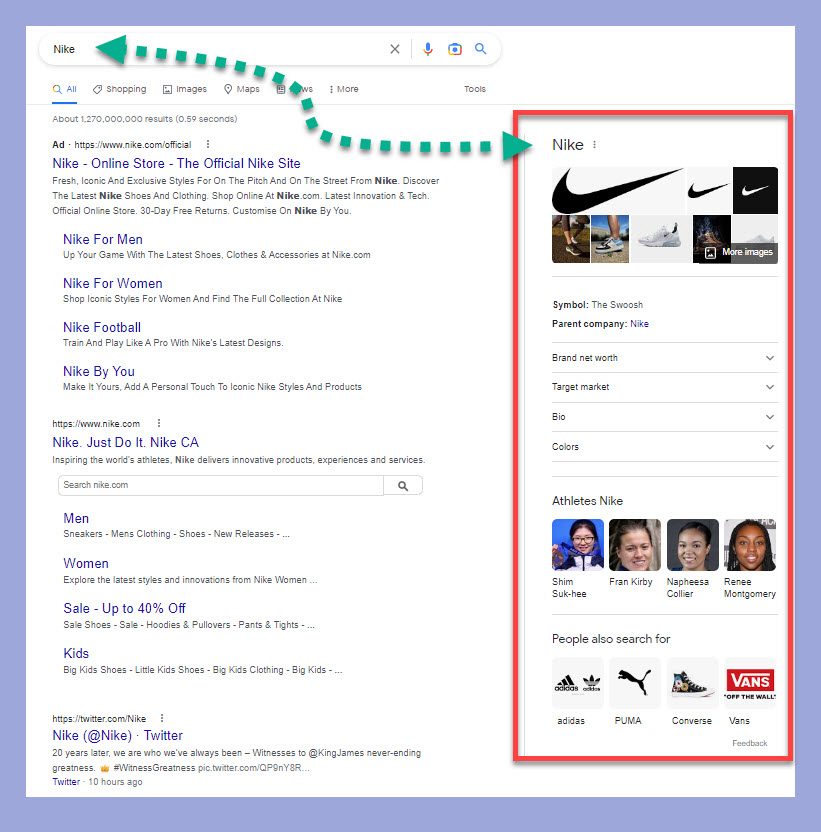
Think of a Knowledge Panel as a useful way for an end user to interact directly with Google’s Knowledge Graph.
Simply speaking, Google’s Knowledge Graph is a database that represents information and relationships between pieces of data (entities) in a visual and organized manner, similar to a map or a flowchart.
It allows Google to understand the relationships between different entities, making it possible for it to answer user questions. But more about that later.
What are Google Knowledge Panels Designed to do?
To understand the goal of Google’s Knowledge Panels, you’ll need a brief history lesson.
Initially, Google’s engineers were focused on helping the user find answers to their queries quickly. Over the years, Google honed its ability to do this.
To see this in action…
When I type ‘wea’ into my browser, I get a weather report in the autosuggest dropdown.
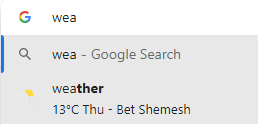
Super useful if you ask me. (I don’t even have to complete the search.)
This shows you just how effective Google is at answering questions.
Once Google achieved its goal of being able to answer user queries, the company realized that users don’t merely use the search engine to answer simple questions. Users also use Google Search to research broader topics.
Now, when you research a topic that you know very little about, you might start your research by looking for general information. Once you have general knowledge, you might then make more specific searches for more granular information.
Google refers to these searches as search journeys.
Typically, a search journey requires multiple searches. To help users through their search journeys, Google presents information hubs within SERP features.
A Knowledge Panel is a knowledge hub where the end user can find a general overview of an entity with links to other resources that an end user might find useful.
This gives the user a high-level snapshot of the entire topic.
We can categorize Knowledge Panels as the result of top-of-the-funnel informational searches.
To demonstrate this, I dumped around 5000 Knowledge Panel keywords into the Similarweb Search Interest Analysis report.
As you can see from the screenshot below, 97.26% of the results are organic. The reason is that top-of-the-funnel keywords are rarely profitable for advertisers.
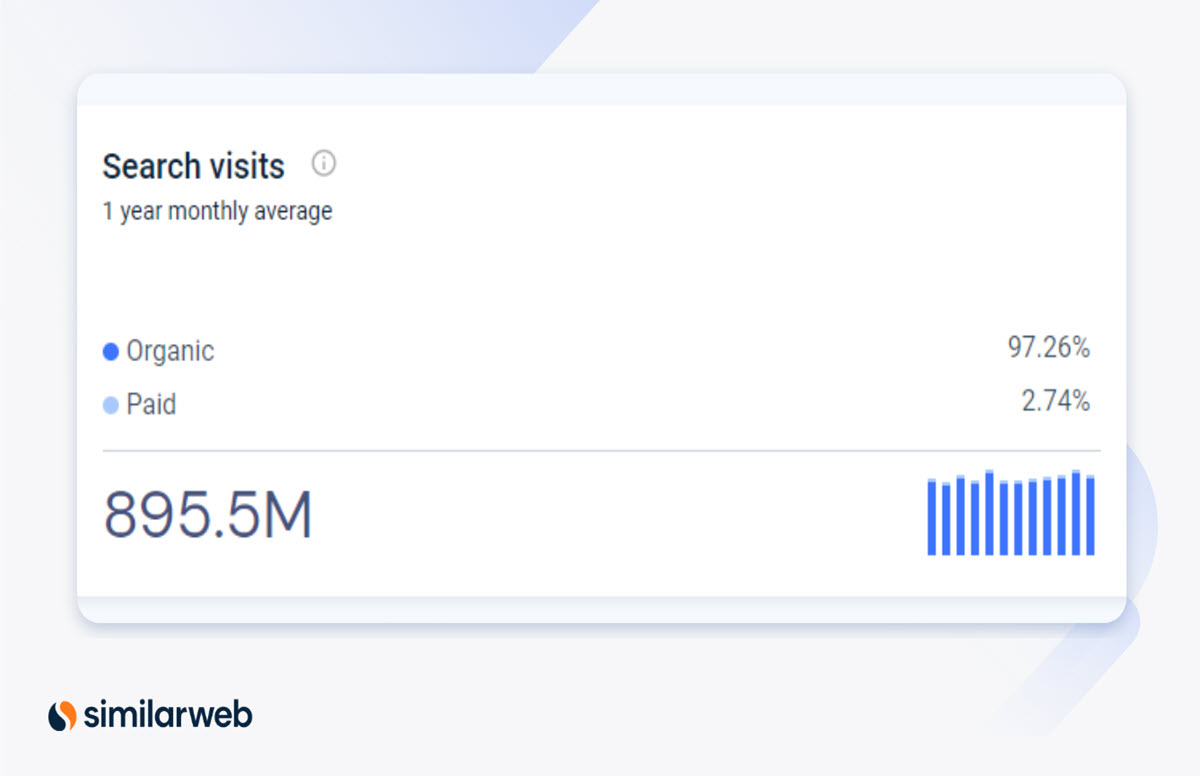
Also, you can see from the screenshot below that the vast majority of the keywords have an informational intent indicating that the SERP feature generally exists right at the start of a user journey.
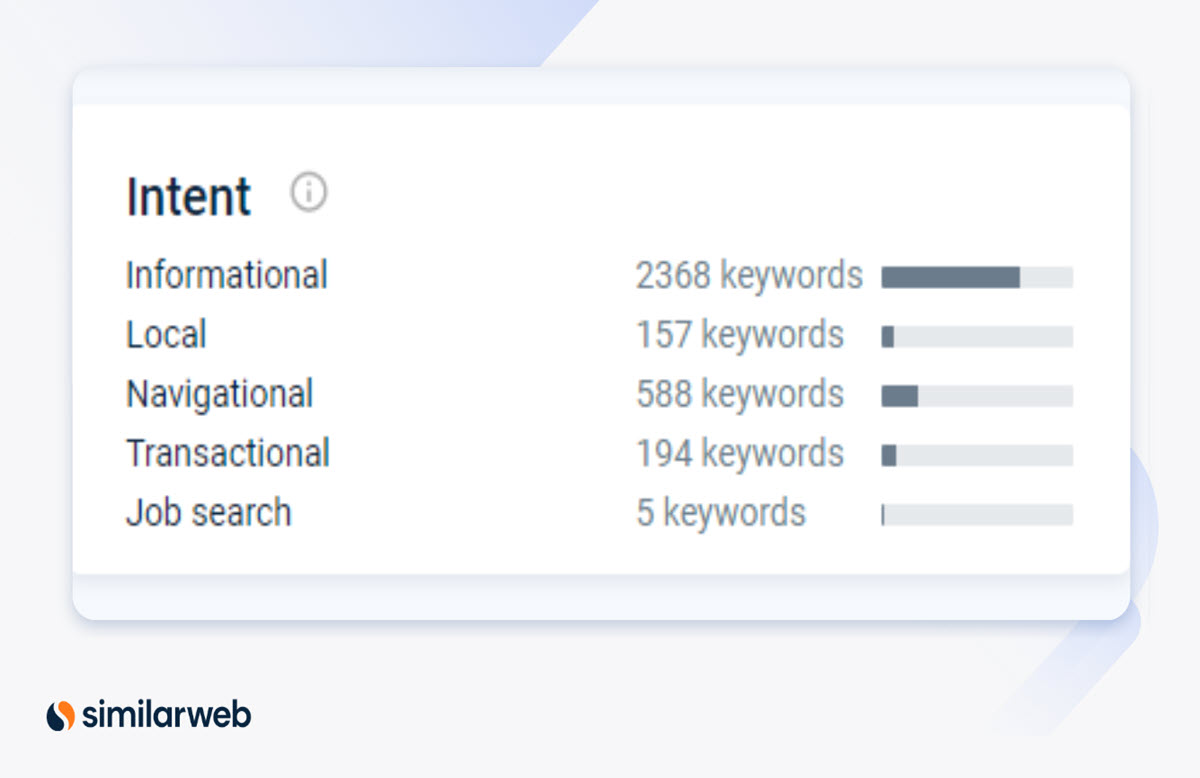
Now, to really understand how Knowledge Panels are built, we must first have a basic understanding of semantic search.
Here is a brief overview.
If any of the content is not entirely clear in the overview, I’m linking to other content that will give you more context.
Semantic Search – A Brief Overview
Simply speaking, Google is a semantic search engine. This means Google attempts to understand the meaning behind:
- The content in its index
- The meaning behind a user query
The reason is…
If Google can fathom the nuanced meaning of your search query and understand the meaning behind the content in its index, then, Google can match the search query with a direct answer.
By answering a query directly, Google saves you time and effort by providing a valuable search experience.
But to effectively match the query with a direct answer, Google needs to understand the meaning of the query as well as the meaning of the content in its index.
And the only way to do that is to understand what the query and content are made up of.
Human language.
To do this, Google stores information in a way that’s similar to how a human brain does. In order to speak, we as people understand what things (entities) are and how entities relate to one another.
So if I was to ask you who was the drummer of the Beatles, you’d have to understand:
- That the Beatles was a band that existed in the 60s
- Who Ringo Starr is
- That Ringo was a band member
- What Ringo’s role in the band was
If I was to ask Google the same question, Google would have to have the information structured in a similar way.
Google has a huge machine-readable database called a Knowledge Graph that structures information and its relationships.
This means both The Beatles and Ringo Starr exist as entities in the knowledge graph. What’s more, the Knowledge Graph identifies The Beatles as a rock band and Ringo Starr as a musician.
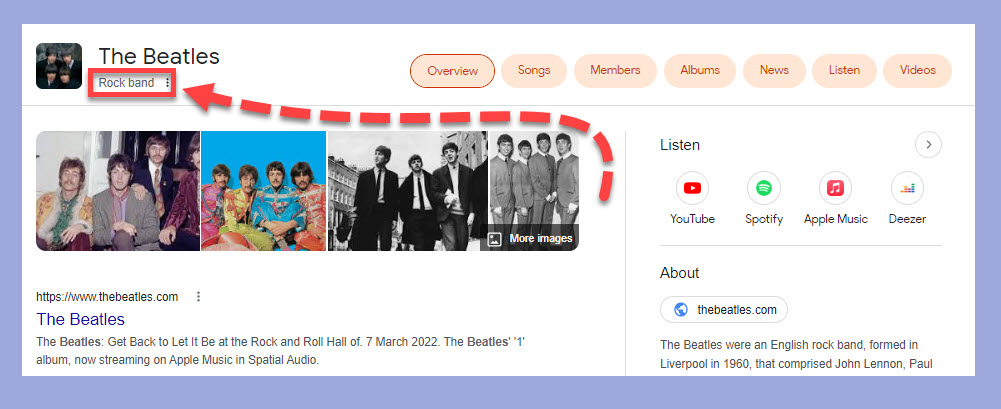
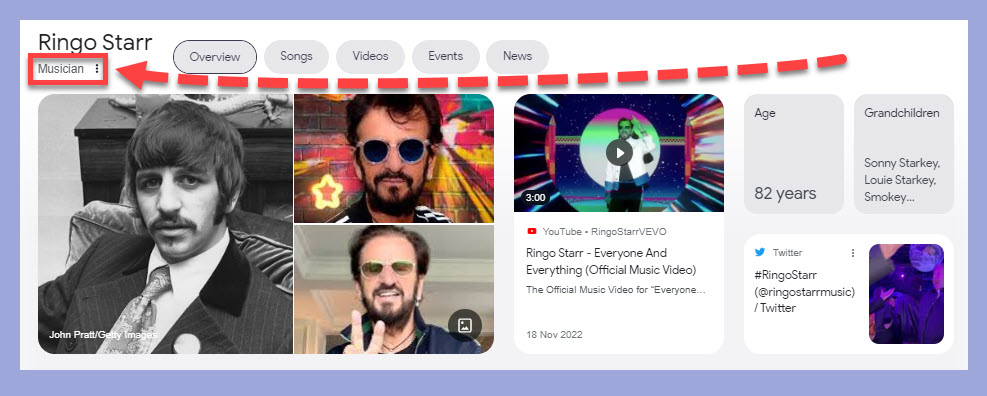
But, just including the entities and their attributes is not enough for Google to answer user queries. The Knowledge Graph needs to include how the entities are related to each other.
In other words, Ringo is not just a musician, Ringo was also the drummer of The Beatles.
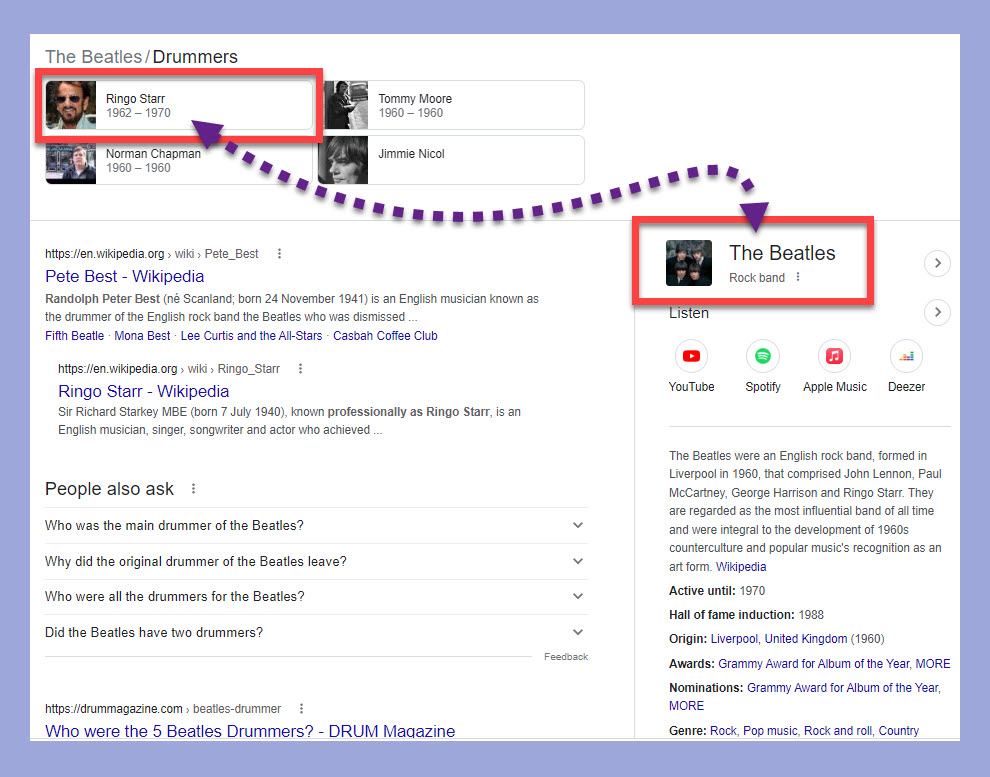
Google uses machine learning to build this database and looks for information that it understands as factually correct from the web.
Okay, so now that we understand a little bit about semantic search and Google’s Knowledge Graph, I have to answer a simple question.
What exactly does semantic search have to do with Knowledge Panels?
Just about everything.
Representing Google’s Entity Information
As I mentioned above, a Knowledge Panel is a SERP feature that presents a user with information about an entity it has in its Knowledge Graph.
They exist to give the user an overview of the information about an entity based on Google’s understanding of the entity. This means a Knowledge Panel will present general information about an entity as well as links to other content about the entity.
Knowledge Graphs are triggered when the user searches directly for an entity.
So, for example, if I was to search for Clint Eastwood, Google understands that I’m referring to Clint Eastwood the entity, and it brings me a rather detailed Knowledge Panel.
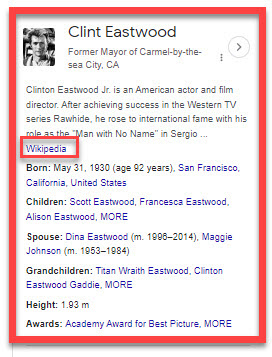
As you can see from the Knowledge Panel above, Google gives you a basic overview of the entity.
There is a basic overview taken from Wikipedia as well as links to various related entities such as his children, spouse, grandchildren, and more.
Below that is an embedded carousel linking to various movies.
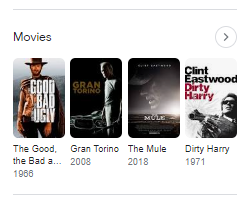
It’s important to understand that the Knowledge Graph is Google’s machine-readable entity data that users don’t see, while a Knowledge Panel is a SERP feature designed for the end user.
Now that you’ve understood the relationship between Google’s entity data and its Knowledge Panels, I’m sure you want to know how to generate a Knowledge Panel for your business.
How to Create a Knowledge Panel
I touched on how Google gathers data for its Knowledge Graph, and how that ends up as part of an entity’s Knowledge Panel.
Now that you understand that, it follows that the basic strategy to winning your own Knowledge Graph is to educate Google. Google needs to ‘understand’ who you are and what you do. It also needs to verify that the information is correct.
In other words, you are educating Google about your business entity. Google needs to understand what or who that entity is and what other entities it relates to.
There are several ways to educate Google.
Establish a Home for Your Entity
You understand that your business is an entity. But does Google?
The first step is to establish an entity home page. John Mueller recommends that you have a page that is dedicated to explaining your entity.
This means you should have a well-written description of your entity.
You should then link to other pages and include your entity description on second and third-party sites where your entity appears, including your author profiles and social media accounts.
This will help Google understand not only your entity but where the entity appears over the web. Google calls recognizing how these entities are grouped together Reconciliation.
An entity home page doesn’t have to be the home page of your site. In fact, it can even be a social media profile page.
But, Jason Barnard recommends using an About Us page as an entity home. Your About Us page is entirely focused on describing your entity. There is no need to add any sales copy. What’s more, unlike a social media profile page, it’s a page that you control.
So whatever you choose your entity home page to be, use it to explain:
- Who you are
- What you do
- Who you serve
Add Schema Markup to Your Entity Home Page
Schema markup is a machine-readable code that supplies Google (and other search engines) with information about your site in a structured form. Now it’s important to note that Google uses natural language processing to gather data for its Knowledge Graph.
But, for Google to do this effectively, Google needs to convert semi-structured or unstructured data into a structured machine-readable format.
Google doesn’t always get this right.
By adding structured data to your pages, you help search engines easily process the data on your website.
This means, to help Google understand your entity, you should add schema markup to your entity home page. Make sure to add the appropriate schema. For instance, if you are trying to educate Google about your personal entity, add ‘person’ schema. If you are educating Google about a local business, add ‘local business’ schema.
If you don’t know how to code, have no fear. You can easily create your schema with the Rank Ranger free schema markup generator.
To get started, choose the right schema for your page by clicking the dropdown menu. This will show you all the available options.
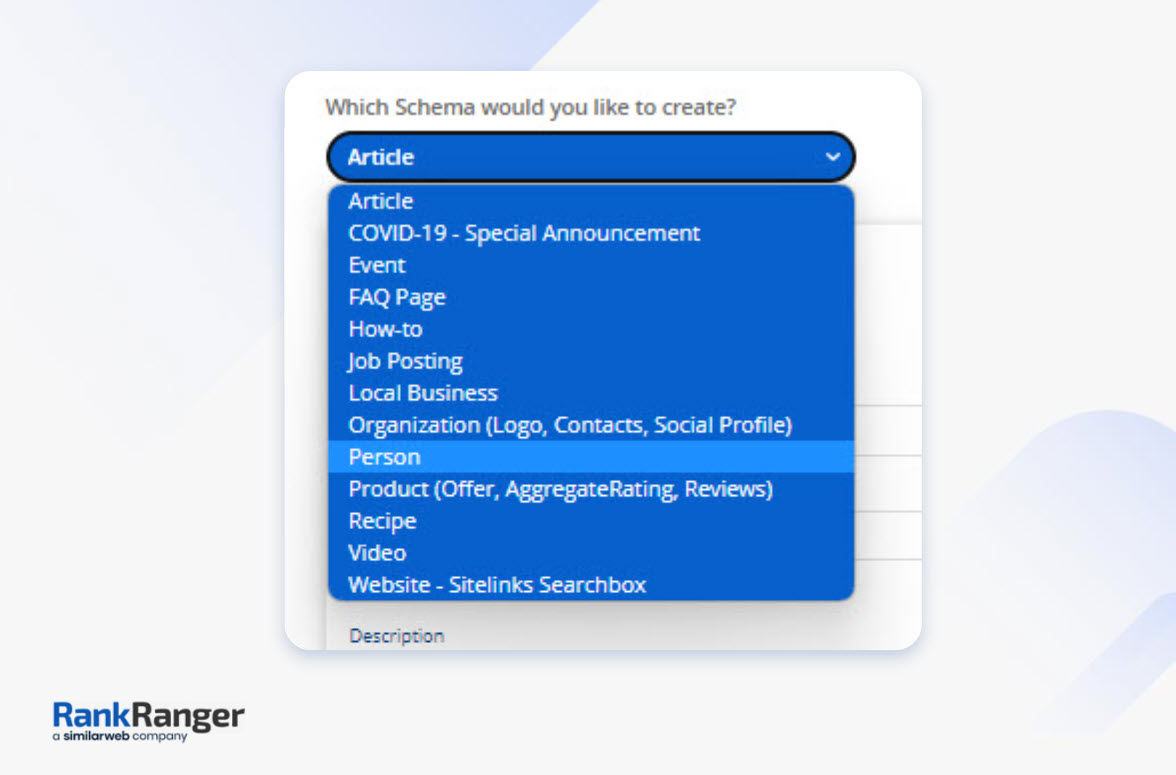
Simply fill in the fields and the schema generator will automatically create your code. Make sure to fill in all the fields including things like social media accounts. This will help Google group all of your content together.
Now that you’ve given Google all the information it needs, you now need to verify that the information is correct.
To do that make sure your entity shows up on third-party sites.
Show Your Entity Data Is Accurate by Showing up on 3rd Party Sites
To be absolutely clear, 3rd party sites are sites that you don’t own or control. (A second-party site is a site that you have some control over but don’t own such as a social media site.)
Third-party sites are important for verifying that the entity information on your entity home page is correct. One of the best ways to do this is to create guest posts or to appear on podcasts.
Most sites that accept guest posts will include an author bio page. When creating your bio, make sure to include the same or similar information that appeared on your entity home page. Being consistent is key.
Track Your Branded Terms and Look for Opportunities
If you’ve been working on your Knowledge Panel for a while now, you should track your branded keywords.
Because…
Your Knowledge Panel represents your entity in search. This means it’s only likely to show up in branded terms. But you’ll be surprised sometimes.
When looking into your rank tracker you might notice some obvious opportunities.
I took a look at the Rank Ranger Rank Insights report for the site 888poker.com and noticed that there are terms where the domain is ranking in the text results where a Knowledge Panel also appears.
These are all opportunities as the domain does not appear in these Knowledge Panels.
Now it stands to reason that if the domain ranks in the text results, it could potentially rank in the Knowledge Panel.
As you can see in the screenshot below, there are some non-branded terms that include Knowledge Panels.
Terms like:
- Play *****
- *****
- ***** texas ******
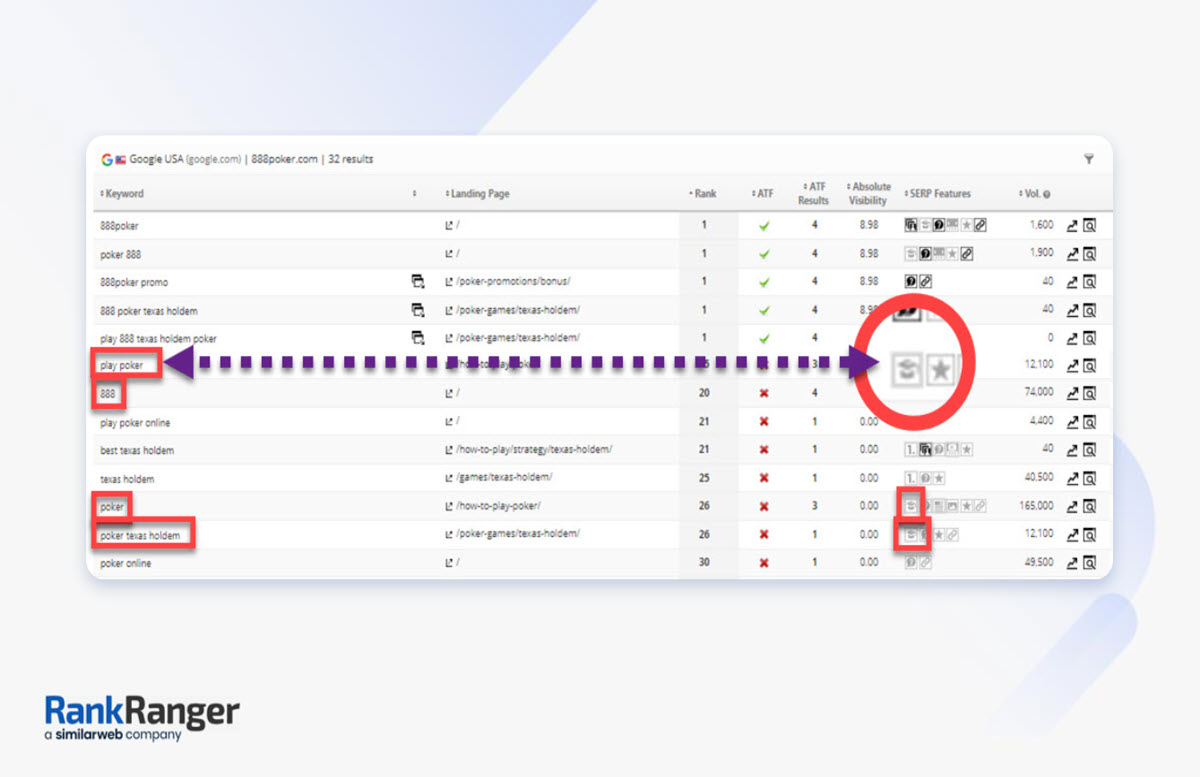
If you Google play *****, you’ll see a Knowledge Panel for the site WSOP *****.

Now, it looks like a profitable keyword. You can see this by the fact that ads appear on the page. A golden opportunity.
Could you potentially win that Knowledge Panel?
Are there proactive steps you can take to get your content featured there?
Although I’ve never attempted to win a Knowledge Panel, you might be able to once your Knowledge Panel is showing up on your branded terms.
This would require testing and I’ll leave it to you.
Knowledge Panels – Showcase Your Brand
By now you should have a pretty good understanding of what a Knowledge Panel is, how it works, and how you can educate Google to award your brand with one.
Yes, Google’s algorithms are designed to help the search engine understand not only web content but also entire entities and topics.
This means in order to win a Knowledge Panel the key is to educate Google.
And, anyone can educate Google with just a little persistence and consistency.
FAQs
How can I claim a Knowledge Panel?
To claim a Google Knowledge Panel, you need to be logged into a Google account. If you don’t yet have one you need to first create one.
Once you’ve done that, search for the entity online and find the Knowledge Panel you are looking to claim. At the bottom, you’ll see a ‘Claim this Knowledge Panel’ button. Once you click it, you’ll be directed to a new page where you can click a ‘Get verified’ button.
If the entity is associated with a site that has a Google Search Console account, you’ll be asked to sign in to that account to verify that you represent that entity. You’ll then be directed to a form that you should fill out in detail.
How long does it take to claim a Google Knowledge Panel?
There is no set time frame for claiming a Google Knowledge Panel. If you are eligible to claim a Knowledge Panel, you can request ownership through Google’s verification process.
Once you have submitted your request, Google will review and respond to your request typically within a few days or up to a few weeks.
However, the actual timing may vary depending on various factors such as the complexity of your request or Google’s workload.
How can I edit a Knowledge Panel?
Google Knowledge Panels are automatically generated by Google using information from various sources and cannot be directly edited. However, you can suggest changes or updates to the information that appears in the panel by using the “Suggest an edit” feature.
To suggest an edit, go to the Google search results page where the Knowledge Panel appears, click on the three dots in the top-right corner of the panel, and select “Suggest an edit.” From there, you can suggest changes to the panel’s information, such as correcting factual errors or updating outdated information. Google will review your suggestion and may make the appropriate changes to the panel.
How can I edit a Google Knowledge Panel that I’ve claimed?
Once you’ve claimed a Google Knowledge Panel, you can suggest changes to the information it displays by using the “Suggest an edit” feature. To do this, go to your knowledge panel and click on the “Suggest an edit” button. From there, you can edit the information displayed on the panel, such as the name, logo, images, and other details. After submitting your changes, they will be reviewed by Google for accuracy and appropriateness before being approved or rejected.
Where is a Knowledge Panel on Google?
A Knowledge Panel on Google can be found on the right-hand side of the search results page when you search for a well-known person, place, organization, or thing. The panel provides a summary of information related to the search query, including a brief description, images, related entities, and more.
How do you add photos to a Google Knowledge Panel?
Google Knowledge Panels are automatically generated by Google’s algorithms, so there is no direct way for individuals or organizations to add photos to their own Knowledge Panel. However, Google can pull photos from various sources, such as a Google Business Profile or the entity’s official website, so it’s important to ensure that your online presence accurately reflects your entity and includes high-quality images. Additionally, if you believe there is an error in the photos displayed in your Knowledge Panel, you can report it to Google through their feedback mechanism.

